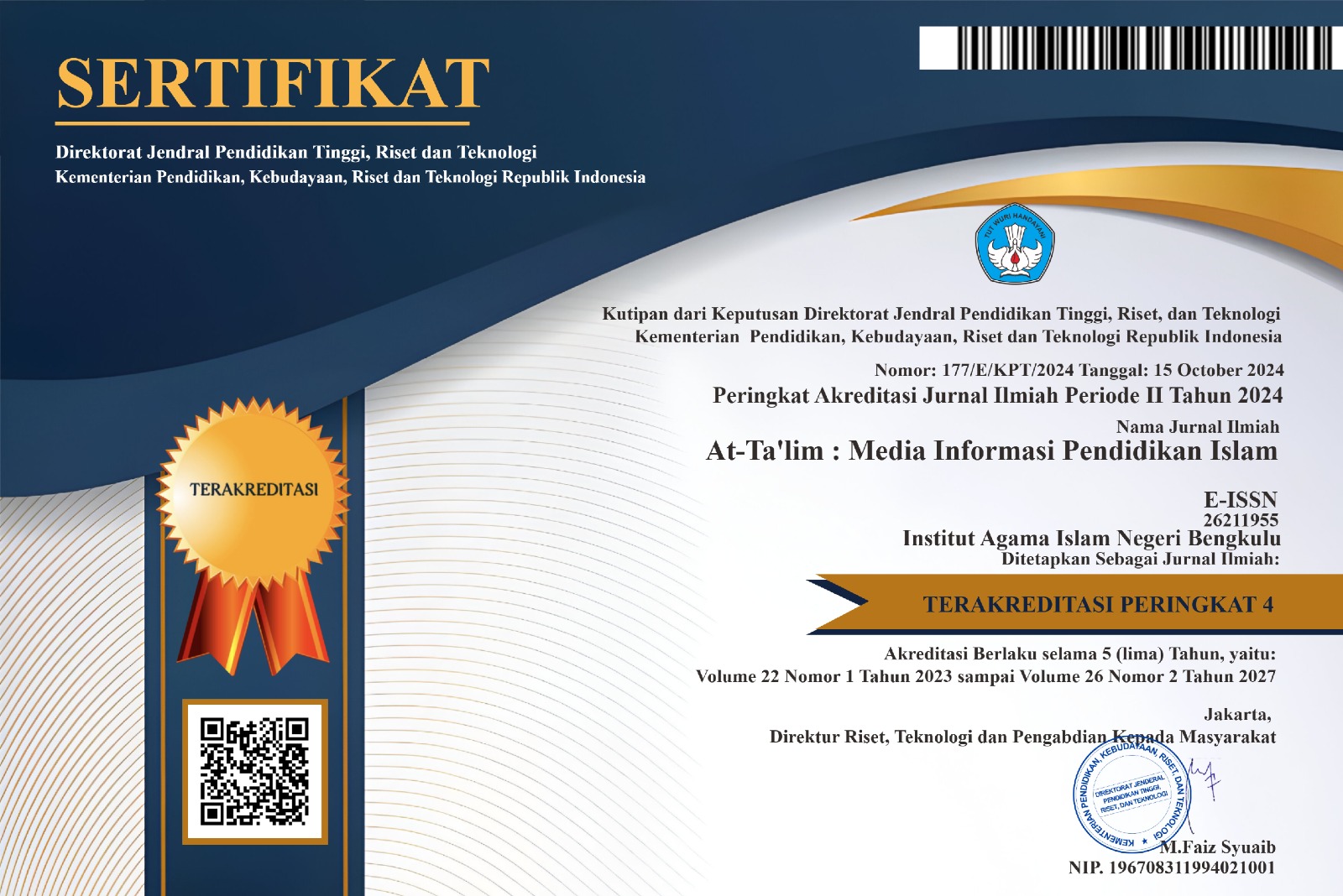Komparasi Strategi PQ4R dengan Strategi Kooperatif Jigsaw Terhadap Hasil Belajar Teknologi Pendidikan Mahasiswa Semester V Program Studi Pendidikan Agama Islam
Abstract
This article compares PQ4R Strategy, with the Cooperative Strategy Jigsaw, Against Educational Technology Learning Outcomes Studies Program of Islamic Education. The population in this study were all students. This study population is the fourth semester students who are 4 classes of Islamic education courses in Academic Year 2014 -2015. The amount of each class of 30 students. Sampling was done by cluster random sampling technique. Results of the research analysis pointed-out that the use of learning strategies PQ4R its better results compared to learning by using Jigsaw learning strategy on learning outcomes Educational Technology student of Islamic Education Semester Va and Vb.
Full Text:
PDF (Bahasa Indonesia)DOI: http://dx.doi.org/10.29300/attalim.v14i1.258
Refbacks
- There are currently no refbacks.
Copyright (c) 2015 Suhirman Suhirman

This work is licensed under a Creative Commons Attribution-NonCommercial-ShareAlike 4.0 International License.
Thank you, the journal editorial team appreciates your visit to the At-Ta'lim : Media Informasi Pendidikan Islam. Think that working together will help to advance the pace of global knowledge generation and exchange. We are confident that publications in Attalim journal will contribute to the existing knowledge base, and novelty and stimulate further research in the field of islamic education. We greatly appreciate your contributions and look forward to working with you through this journal.
License Term: At-Ta'lim : Media Informasi Pendidikan Islam by Pusat Publikasi Ilmiah Universitas Islam Negeri Fatmawati Sukarno Bengkulu is licensed under a Creative Commons Attribution-NonCommercial-ShareAlike 4.0 International License. You are free to: Share - copy and redistribute the material in any medium or format; Adapt - remix, transform, and build upon the material; The licensor cannot revoke these freedoms as long as you follow the license terms. Under the following terms: Attribution - You must give appropriate credit , provide a link to the license, and indicate if changes were made . You may do so in any reasonable manner, but not in any way that suggests the licensor endorses you or your use. NonCommercial - You may not use the material for commercial purposes. ShareAlike - If you remix, transform, or build upon the material, you must distribute your contributions under the same license as the original. No additional restrictions - You may not apply legal terms or technological measures that legally restrict others from doing anything the license permits. |
LPPM, Pusat Publikasi Ilmiah, Universitas Islam Negeri Fatmawati Sukarno Bengkulu, Indonesia






